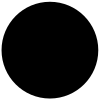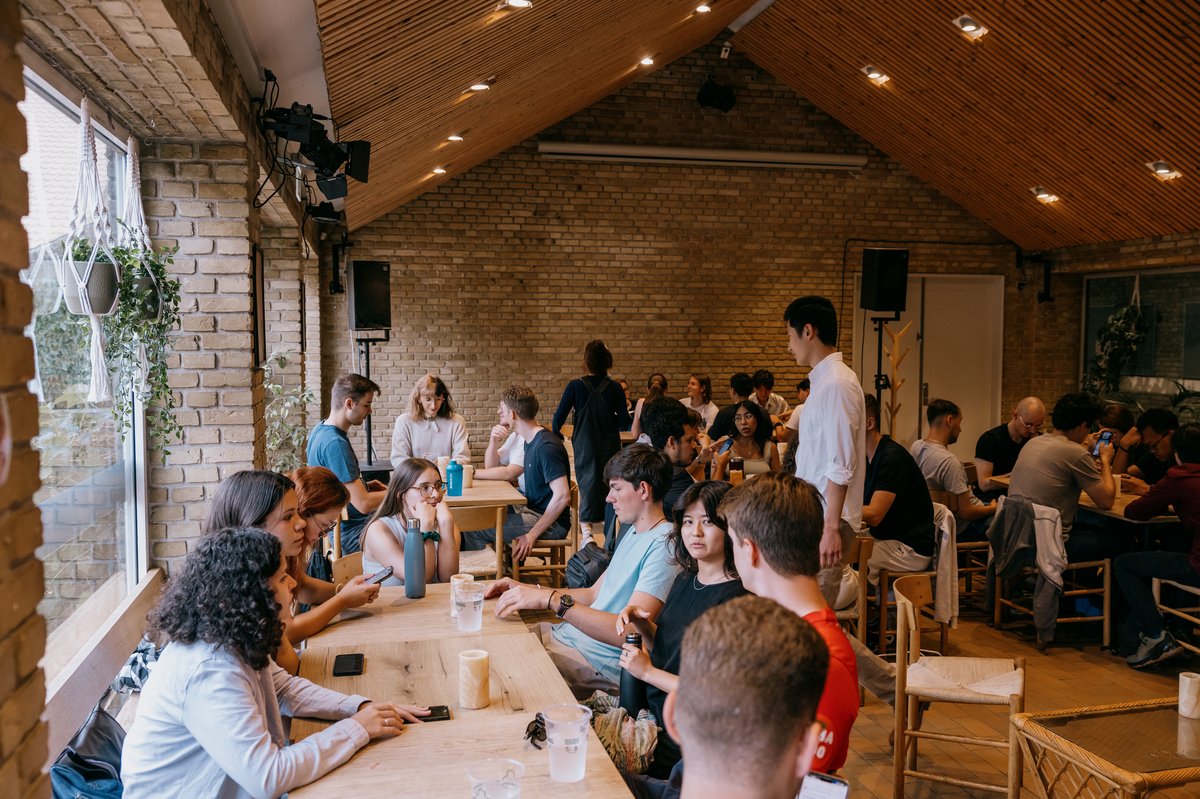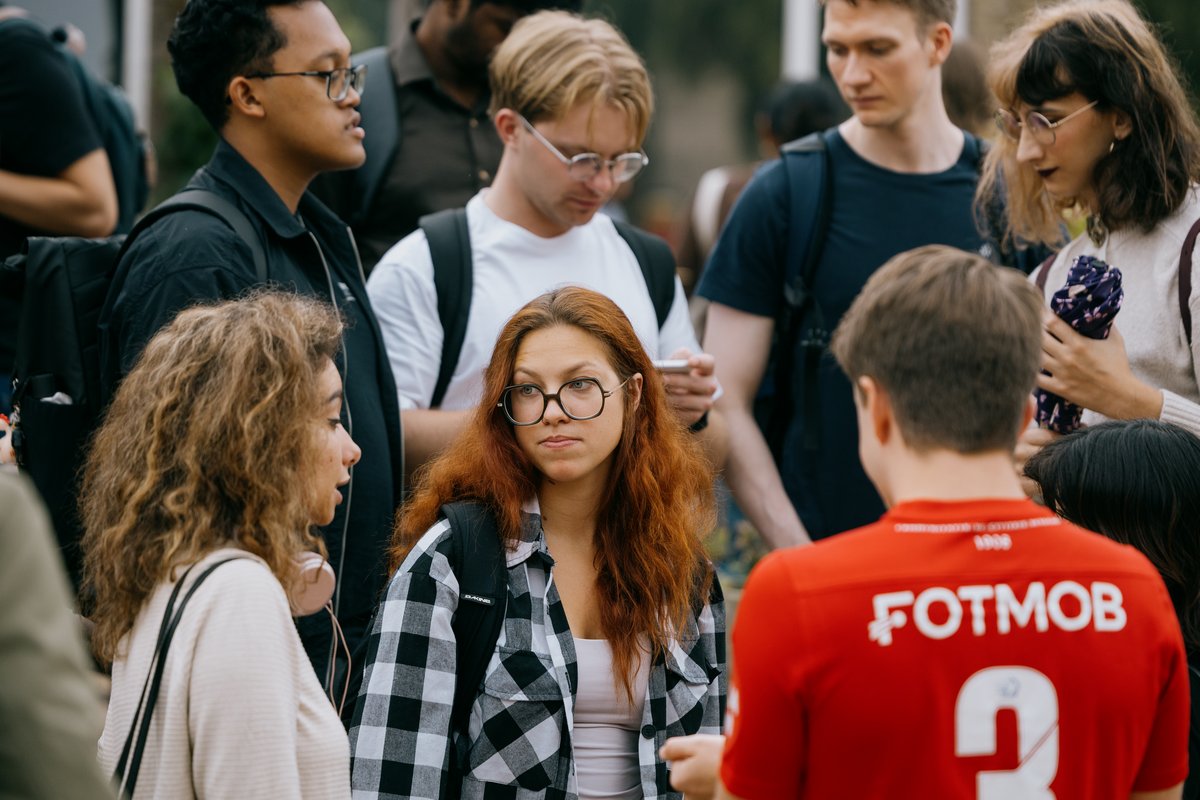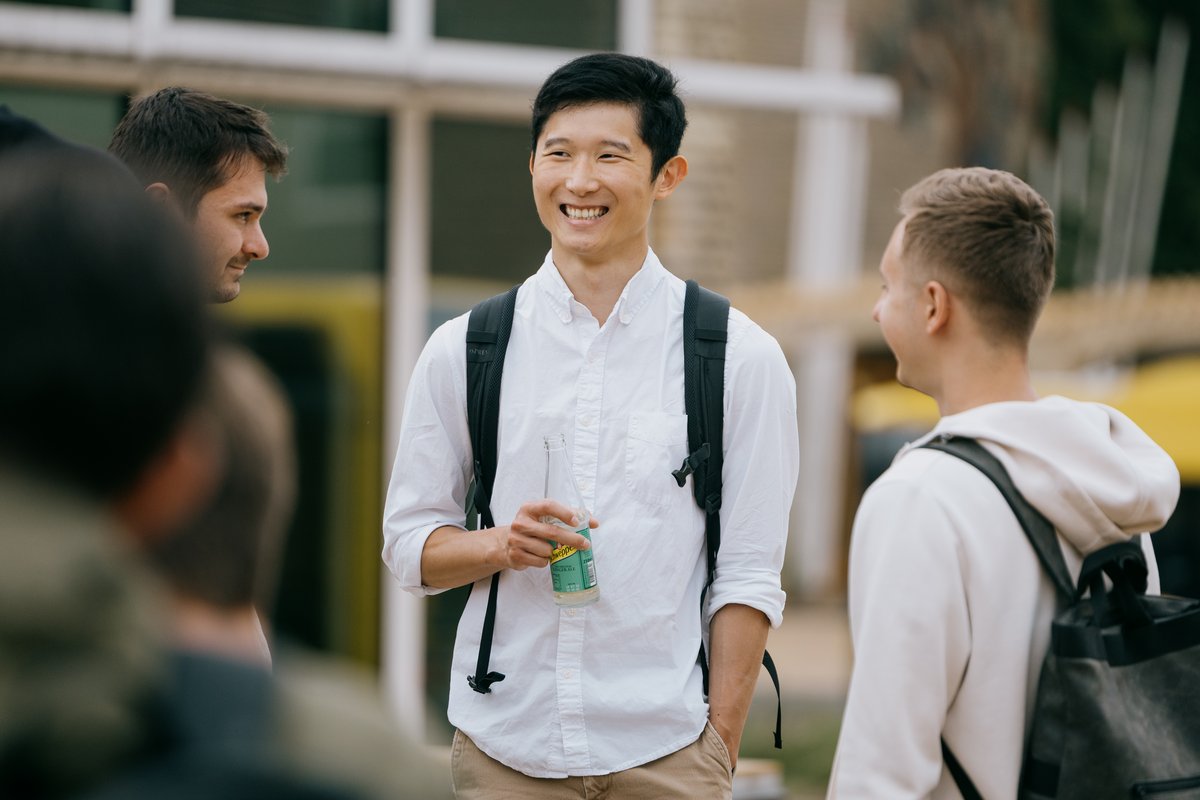Who are the new students of 2025 – besides being 21–22-year-old general upper secondary graduates with 2.1 gap years to their name
This year, 29,223 students have been offered a place at one of the country’s universities – 7,436 of them at AU. But what characterises the new cohort of students? At Omnibus, we have attempted to sketch an overall picture of the class of 2025.
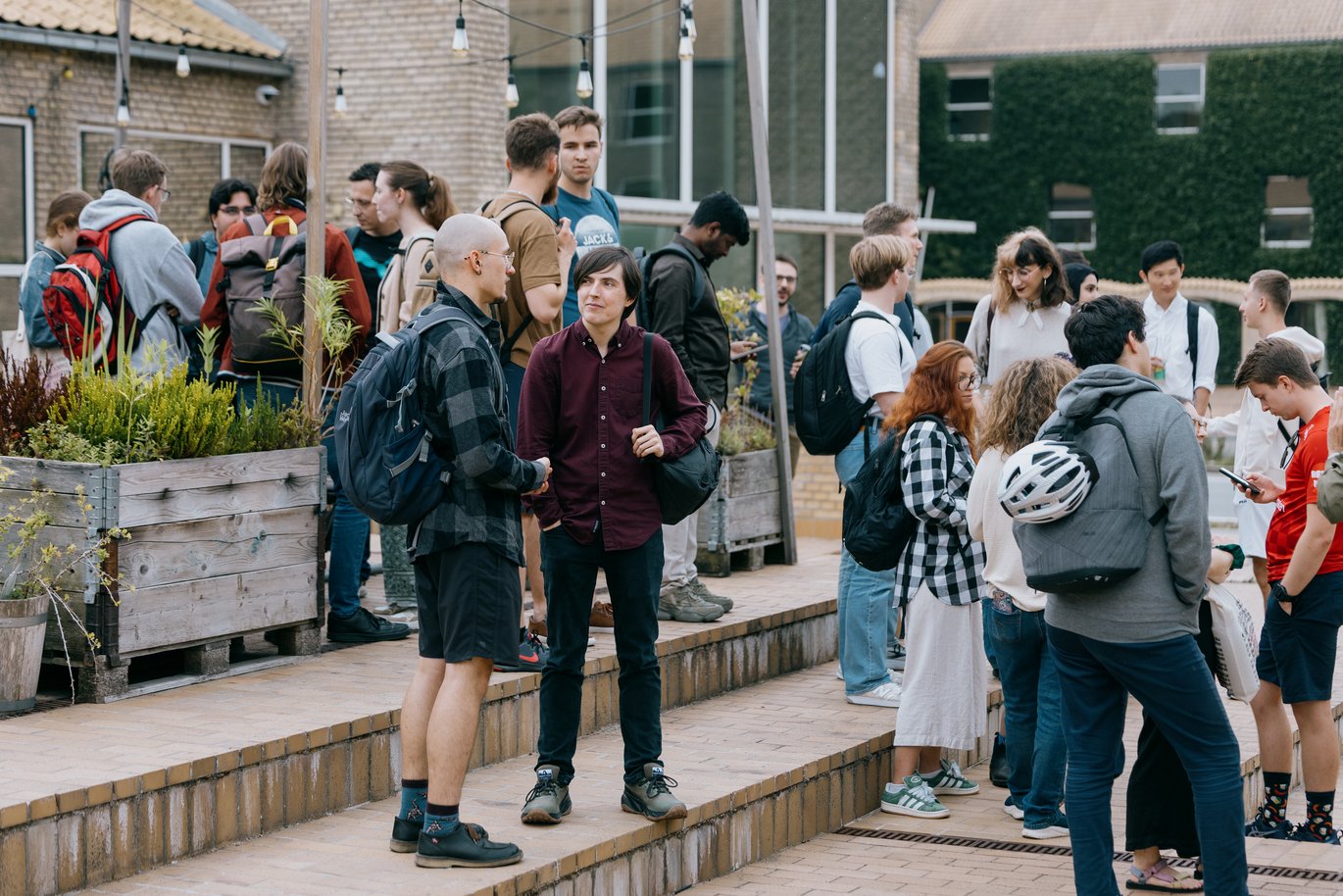
In these days you can see them following their tutors around campus in long lines, and you can hear their cheering echo across the university grounds. But who are the new students of 2025? What is their background – and what defines them as a cohort?
To answer this, we have looked at statistics and spoken with Jonas Kretzschmar Fink, academic coordinator at AU Student Administration and Services, who is responsible for recruiting new students and knows the incoming cohort in depth. Each year, AU Student Administration and Services prepares an analysis of the target group.
“If there is one thing that characterises the target group today, it’s that they are extremely academically competent and motivated,” Jonas Kretzschmar Fink says, adding that young people today put considerable effort into researching their degree programmes to make the right choice the first time.
General upper secondary school still dominant
The first thing that many of the new students will have in common is their choice of upper secondary education.
“The vast majority come from general upper secondary school (STX), but we are seeing more students with a higher commercial examination (HHX) background than before,” Jonas Kretzschmar Fink says. This is supported by figures from the Ministry of Higher Education and Science, which show that nearly two out of three students admitted to AU come from STX. Next is HHX with 15 per cent.
Inflation in gap years
It’s not only their choice of upper secondary education that several of the new students have in common.
“More young people are taking multiple gap years. There has been a kind of inflation in gap years,” Jonas Kretzschmar Fink explains, before elaborating that many young people today want time to pause and reflect before embarking on higher education.
“When they finally do start a degree programme, they see it as the beginning of the rest of their lives. Many move away from home at the same time,” he points out.
According to an analysis (in Danish) from July by the think tank DEA, the number of gap years taken by students before beginning a university bachelor’s programme has risen from an average of 1.4 years in 2013 to 2.1 years in 2023.
Older than before
The rise in gap years also means that today’s new students are older than their predecessors when they begin higher education. Ten years ago, the most common starting age at AU was 20–21, with one in four students beginning at age 20. This is shown by figures from the Ministry of Higher Education and Science.
Today, the most common starting age at AU has shifted one year to 21–22, and only one in ten new students is 20 years old.
"If there's anything negative to say about this, it’s that education – from the young people's perspective – is perceived as the start of the hamster wheel. They fear getting stuck and losing opportunities once they commit to a degree programme. That is why they need to choose correctly,” Jonas Kretzschmar Fink says, highlighting the younger generation’s tendency to delay the decision of study – and life direction.
Want to be 100 percent sure
The question of choosing correctly looms large for the new cohort, according to Jonas Kretzschmar Fink.
"They are extremely thorough in their research and considerations when applying for a degree programme," he says, and adds that this new group of young people want to be 100 per cent certain in their choice of education.
And what have they chosen? Well – at AU, almost one in four new students can look forward to studying either Medicine, Business Administration or Law, after completing their thorough deliberations and settling on one programme out of the more than 90 offered at AU alone.
High expectations in the age of AI
The new cohort is not only thorough – they also place high demands on how communication is directed at them, and they take a critical approach to information.
“They value credibility, honesty and authenticity greatly,” Jonas Kretzschmar Fink says, and explains that AU uses students as communicators to the target group whenever possible. The aim is to create good role models they can relate to – for example on Instagram or AU’s other channels.
“AI has also accelerated a development over time in which they seek people as senders of information, rather than the mediocrity that AI also creates,” Jonas Kretzschmar Fink concludes.
This text is machine translated and post-edited by Cecillia Jensen
